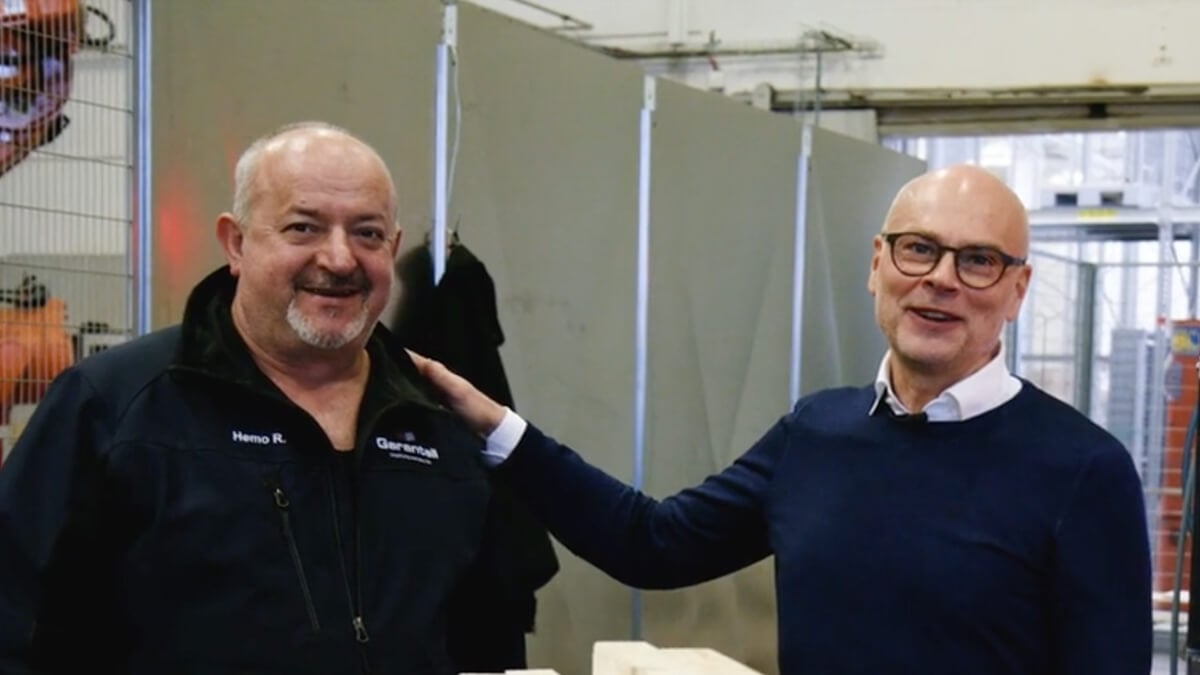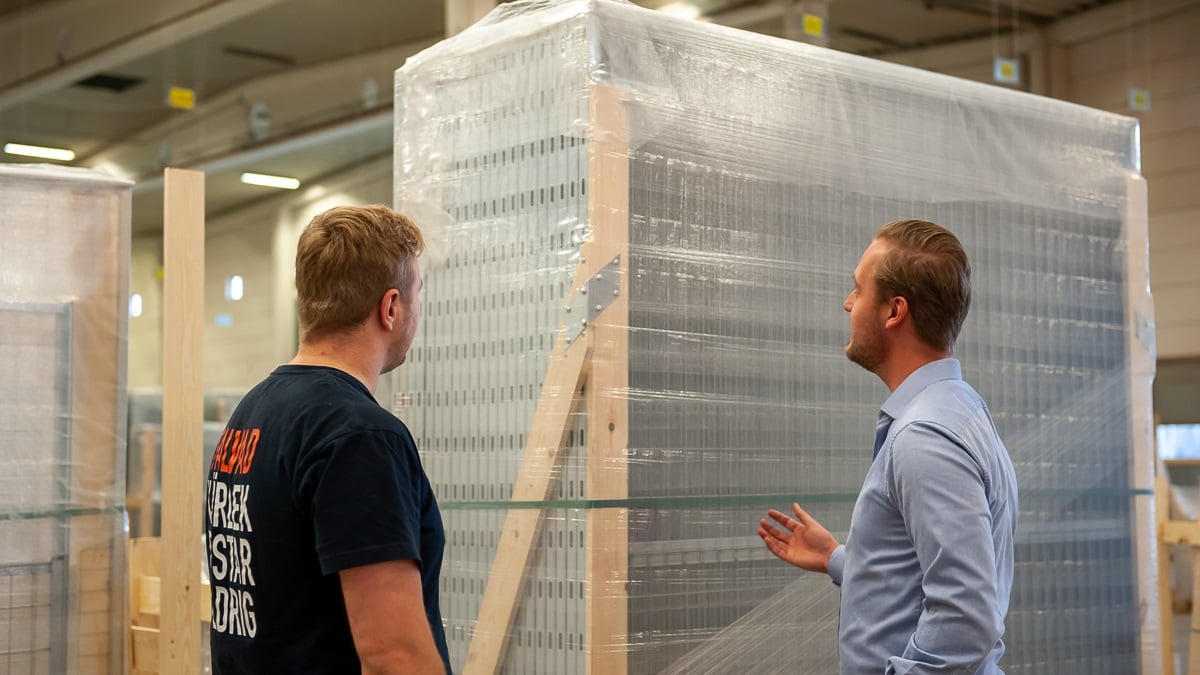This year, many traditions have had to take a back seat. Due to the spread of the coronavirus, there are restrictions regarding the maximum number of people permitted to gather in one place, and festive events have had to adapt. This has affected the ability to hold everything from weddings to funerals in the usual way. Online funerals have become common in Sweden, while holidays such as Midsummer, crayfish parties or birthdays have been celebrated within the immediate family instead of as is usually the case with the extended family and friends. Christmas, which is considered the major holiday period in much of Europe, is now on the horizon. That too will be different for many people this year, as older relatives are unable to participate in the festivities in the same way as usual.
Companies that usually organise a Christmas buffet for their employees, sometimes along with a Christmas show, have had to rethink their plans. And this is a tradition too: In a telephone survey of 1,000 Swedes 10 years ago, it emerged that two out of three private sector employees were invited to a Christmas buffet by their employer. It’s not as common in the public sector, but even there just over half were invited to a Christmas buffet.
The Christmas buffet is an established tradition in Sweden. The Swedish word for Christmas (jul) is of pagan origin – as far back as the Vikings people drank yule beer, enjoyed with food and entertainment, when the winter was at its darkest. Precisely what the Christmas meal looked like then we don’t know, but perhaps even then pork was on the menu.
For a long time, both a pig’s head and its trotters were an obvious feature of the Swedish Christmas buffet, while the ham was saved for the summer or possibly eaten at Christmas in grander houses. Today, the beautifully glazed ham is the centrepiece of the Swedish Christmas buffet, while most people now avoid the trotters. Lutfisk, jellied veal, Christmas sausage and “dopp i grytan” (bread dipped in the broth from cooking sausages or ham) are some of the oldest dishes that are still on the Swedish Christmas buffet.
In the Middle Ages, when Sweden was Catholic, people fasted in the days running up to Christmas. Then it was possible to eat porridge and lutfisk, while the meat dishes had to wait until Christmas Day. Lutfisk is prepared from dried fish soaked in water with lye, and is a seasonal tradition because it was more difficult to get hold of fresh fish in the winter. It is said to be the only dish that has been celebration food in Sweden for over 500 years, but today it is among the less popular Christmas dishes.
Meatballs, prinskorv sausages and Jansson’s temptation (a potato and anchovy dish cooked in the oven) have only been staples of the Swedish Christmas buffet for about 50 years, although the dishes were invented before that. In addition, the Christmas buffet has been influenced by the “ordinary” Swedish smörgåsbord with, for example, beetroot salad and various kinds of salmon and pickled herring. Restaurants often try to excel at offering as many and as imaginative variations of herring as possible. They can be flavoured with herbs, different kinds of vegetables or berries, or perhaps alcohol, such as sherry and gin. Numerous kinds of cabbage, cooked in different ways, are also part of the Christmas buffet, as cabbage is one of the few crops that can be harvested as late as December in Sweden.
Last but not least, of course, desserts such as rice pudding, cheesecake, gingerbread, toffees and sweets are served. You can also find more traditional elements such as apples, nuts, marzipan and dried fruit, such as dates, figs and raisins.
For a long time, Christmas buffets were only eaten in homes. Serving Christmas buffets in restaurants started in Sweden after the Second World War. Initially, this was on the Advent Sundays before Christmas. Nowadays, restaurants put on Christmas buffet evenings for corporate customers in particular several times a week, starting as early as November, so that everyone can fit in this traditional meal in time before Christmas.
But this year it was a little different.
The photo is from Madame Brasserie & Café, Värnamo.

Light has always had a special place in Sweden. Even in the darkest of winter, as I walk through the city streets there are lights in every window from candles, lamps, and Christmas decorations illuminating the snow clad buildings. It makes me realise how much people actually miss sunshine and long summer nights. The longing for light in Sweden culminates around one of the shortest days of the year- December 13, called “Luciadagen”.

In a company where growth is in constant focus, it is easy to end up in a situation where you constantly ‘just have your head above water’. You know the feeling? The focus is on machines and productivity. You forget things like employee well-being, work environment and tidiness. We are trying to change that! We believe that everything is connected. Order, quality, employee well-being is in line with customer satisfaction. How do we work with this? On many levels actually, but this time I thought I would tell you about our work with property, work environment and the group that has been working with this. Here are some tips to make the workplace more pleasant, based on our experience. Maybe you can get inspired by it!

Remember the moment when the clock struck twelve and you made all these New Year’s resolutions? Eating healthier, moving more? It has been more than seven months now. How is it going? Surveys show that less than 50% of the people are able to keep their promises for more than a couple of months. But do not feel unsuccessful, it is never too late to start a new habit. My tip is not to promise, set goals instead. Then you can have intermediate goals, rewarding yourself. If you miss an intermediate goal, well it is not a disaster, you have a new chance for the next intermediate goal. This feels much better than breaking a promise.


Have you ever wondered how it is to work in a self-leading team? Does it sound like a dream? Or are you rather sceptical? At Garantell, we are trying to work like this. In all transparency, it is a bumpy road. And this might sound corny, but we are growing every day. I want to share some lessons learned. I think that setting shared goals, growing together, and maintaining a good working environment helps us on the way.

It went so fast. One cannot completely grasp it, but we have a spring feeling in our cold country. We went from -18 to +8°C in one week, so we really did not have the time to let it sink in. The snow melted at a furious pace and most of us removed skates and skis to make room for bicycles and boats…

Digitalization is important to Garantell. From our customers drawing mesh decks, machine guards, rear mesh in the Garantellator online to producing it, everything is automatic. But digitalization is only a tool. Our self-leading teams are at the heart of our company. How those two go together explains our chairman Mikael Axelsson. This time around he has not written a blog, but we made a vlog. Watch it here:

In today’s world, it is important to keep on your toes and be well-prepared for whatever the day has in store. This is so much easier to achieve when you have employees around you with different experience and knowledge. Perhaps you have read the previous blog posts “Different Nationalities, Shared Strength” and “Shared Breakfast, Nourishment for the Soul”, written by a couple of my colleagues. They give the impression that we are like a bag of mixed sweets – a great many people from different countries and different departments. And that really is true. Garantell has all functions and departments under one roof, from Production to Sales, from Development to Painting.

Everything started when I left my beloved Iraq in 2015 and came to Sweden. I had to leave a life, a family, a career and a future. Everything. To start anew. In the middle of summer 2018, I entered Swedish working life. It was Garantell who opened the doors for me. I can clearly recall the day I biked through the fragrant and dense forest to get to Speditörvägen 8. Things I knew for certain: That day was the beginning of a new chapter in my life in Sweden. I was more than ready, full of gratitude and brimming with curiosity. I had great expectations and felt a strong drive.

Time is one of the few things in life that is truly equal – no one can complain or insist that the quota is unfair. Although, the 24 hours a day we all have at our disposal can be utilised or wasted in various ways. However, only the things we manage to accomplish endure over time.